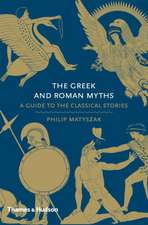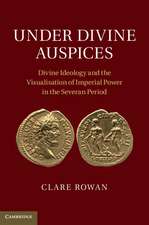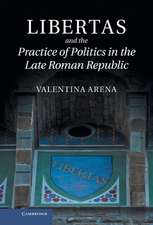Plague and the End of Antiquity: The Pandemic of 541–750
Editat de Lester K. Littleen Limba Engleză Paperback – 13 ian 2008
| Toate formatele și edițiile | Preț | Express |
|---|---|---|
| Paperback (1) | 303.30 lei 6-8 săpt. | |
| Cambridge University Press – 13 ian 2008 | 303.30 lei 6-8 săpt. | |
| Hardback (1) | 643.03 lei 6-8 săpt. | |
| Cambridge University Press – 10 dec 2006 | 643.03 lei 6-8 săpt. |
Preț: 303.30 lei
Nou
Puncte Express: 455
Preț estimativ în valută:
58.05€ • 63.08$ • 48.80£
58.05€ • 63.08$ • 48.80£
Carte tipărită la comandă
Livrare economică 21 aprilie-05 mai
Preluare comenzi: 021 569.72.76
Specificații
ISBN-13: 9780521718974
ISBN-10: 052171897X
Pagini: 382
Ilustrații: black & white illustrations, maps
Dimensiuni: 152 x 229 x 22 mm
Greutate: 0.52 kg
Editura: Cambridge University Press
Colecția Cambridge University Press
Locul publicării:New York, United States
ISBN-10: 052171897X
Pagini: 382
Ilustrații: black & white illustrations, maps
Dimensiuni: 152 x 229 x 22 mm
Greutate: 0.52 kg
Editura: Cambridge University Press
Colecția Cambridge University Press
Locul publicării:New York, United States
Cuprins
Part I. Introduction: 1. Life and afterlife of the first plague pandemic Lester K. Little; 2. Historians and epidemics: simple questions, complex answers Jo N. Hays; Part II. The Near East: 3. For whom does the writer write?: the first bubonic plague pandemic according to Syriac sources Michael Morony; 4. Justinian plague in Syria and the archaeological evidence Hugh N. Kennedy; Part III. The Byzantine Empire: 5. Crime and punishment: the plague in the Byzantine empire 541–749 Dionysios Stathakopoulos; 6. Bubonic plague in Byzantium: the evidence of the non-literary sources Peter Sarris; Part IV. The Latin West: 7. Consilia humana, ops divina, superstitio (Livy 7,2): seeking succor and solace in times of plague, with particular reference to Gaul in the early middle ages Alain J. Stoclet; 8. Plague in Spanish late antiquity Michael Kulikowski; 9. Plague in seventh-century England John Maddicott; 10. The plague and its consequences in Ireland Ann Dooley; Part V. The Challenge of Epidemiology and Molecular Biology: 11. Ecology, evolution, and epidemiology of plague Robert Sallares; 12. Towards a molecular history of the Justiniac pandemic Michael McCormick.
Recenzii
'… interesting and thought-provoking throughout. Each chapter has new ideas to provide the reader … this book is an indication that this fascinating topic is finally receiving the scholarly attention it deserves.' BMCR
'No one interested in the history of epidemic diseases can afford to neglect what Sallares and McCormick have to say …' Medical History
'A most readable and thought-provoking book, though not entirely for the faint-hearted.' Medieval Archaeology
'No one interested in the history of epidemic diseases can afford to neglect what Sallares and McCormick have to say …' Medical History
'A most readable and thought-provoking book, though not entirely for the faint-hearted.' Medieval Archaeology
Descriere
Plague was a key factor in the waning of Antiquity and the beginning of the Middle Ages.
















